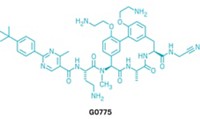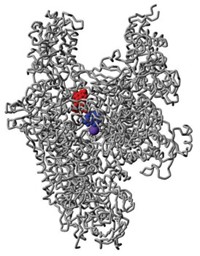Advertisement
Grab your lab coat. Let's get started
Welcome!
Welcome!
Create an account below to get 6 C&EN articles per month, receive newsletters and more - all free.
It seems this is your first time logging in online. Please enter the following information to continue.
As an ACS member you automatically get access to this site. All we need is few more details to create your reading experience.
Not you? Sign in with a different account.
Not you? Sign in with a different account.
ERROR 1
ERROR 1
ERROR 2
ERROR 2
ERROR 2
ERROR 2
ERROR 2
Password and Confirm password must match.
If you have an ACS member number, please enter it here so we can link this account to your membership. (optional)
ERROR 2
ACS values your privacy. By submitting your information, you are gaining access to C&EN and subscribing to our weekly newsletter. We use the information you provide to make your reading experience better, and we will never sell your data to third party members.
Biological Chemistry
Silencing Staph
Antibody blocks pathogen communication
by Sarah Everts
November 1, 2007

If you've ever found yourself lost and unable to communicate with family or friends, you can probably imagine how curbing pathogens' ability to communicate—stealing their cell phones, so to speak—might help incapacitate them.
This is the strategy used to develop an antibody that can prevent some Staphylococcus aureus infections, at least in mice. In the U.S., multi-drug-resistant strains of staphylococcus cause 94,000 serious infections in people and almost 19,000 deaths each year, according to the Centers for Disease Control & Prevention.
Many bugs use a chemical language to assess whether enough similar bacteria are around to launch a coordinated attack on a host. The newly reported antibody sequesters the chemical words S. aureus uses to synchronize infection (Chem. Biol., DOI: 10.1016/j/chembiol.2007.08.013).
"With our antibody, staph doesn't know it has buddies around," says Kim D. Janda, a chemist at Scripps Research Institute. "It gives the immune system time to sweep the bacteria away before they become virulent."
S. aureus uses oligopeptides to communicate with others of its kind. The chemical "words" contain a loop in which a cysteine amino acid's side chain links to the carboxyl group of the C-terminal residue. Because this thioester bond is cleaved before it can elicit antibodies in mice, Janda's group built a chemically related antibody-eliciting surrogate, or hapten, with a hardier lactone linkage.
"This is an extremely promising, novel attempt to find antistaphyloccocal therapeutics and control the increasing spread of the multi-drug-resistant strains," comments Michael Otto, a researcher at the National Institute of Allergy & Infectious Diseases.
Despite the promise of the silencing antibody, there are some challenges. For example, blocking chemical discussions among bacteria after virulence is already initiated makes some bugs produce unwanted biofilms. This limits the antibody's potential therapeutic application to preventing infections rather than curing them, explains Janda. "One could imagine giving this to patients before hospital surgery," he says.
Although the current antibody blocks the chemical words of only one S. aureus strain, Janda says his group is designing a hapten that elicits a generic antibody that silences other S. aureus strains as well. He is also discussing licensing with both GlaxoSmithKline and Pfizer.




Join the conversation
Contact the reporter
Submit a Letter to the Editor for publication
Engage with us on Twitter